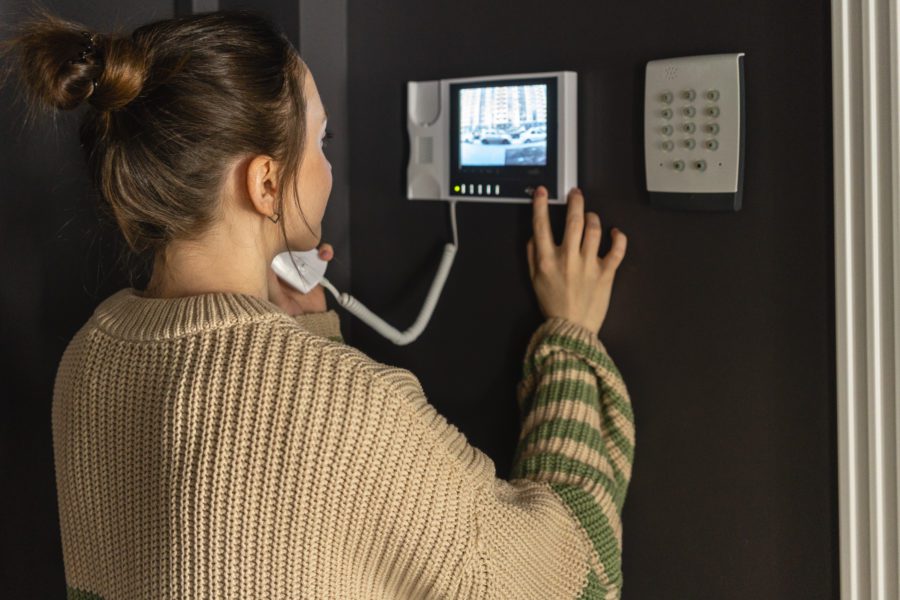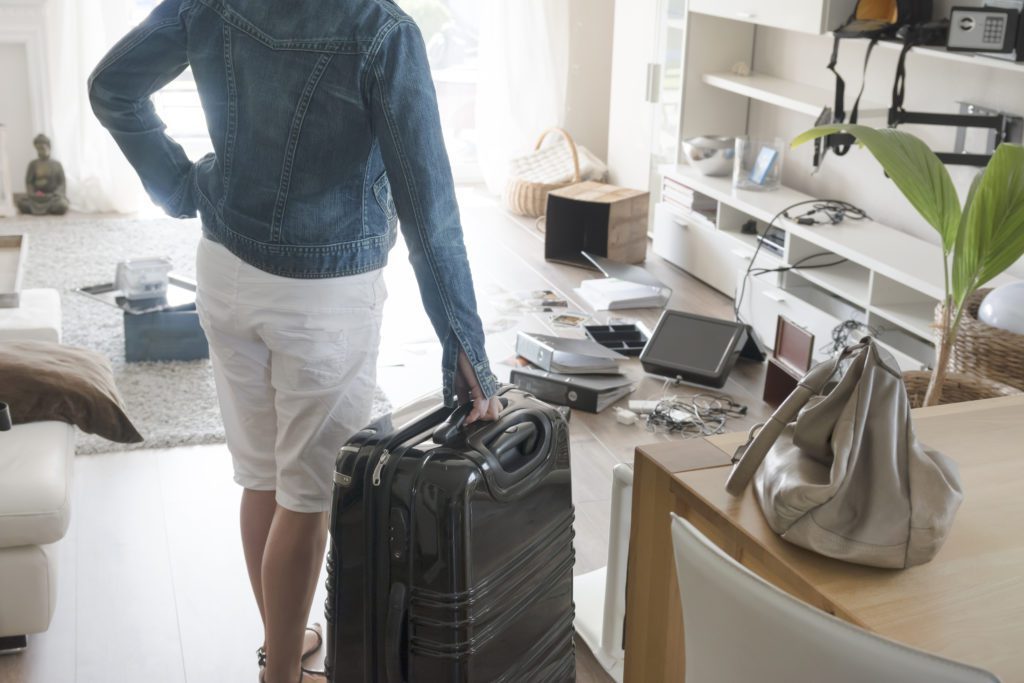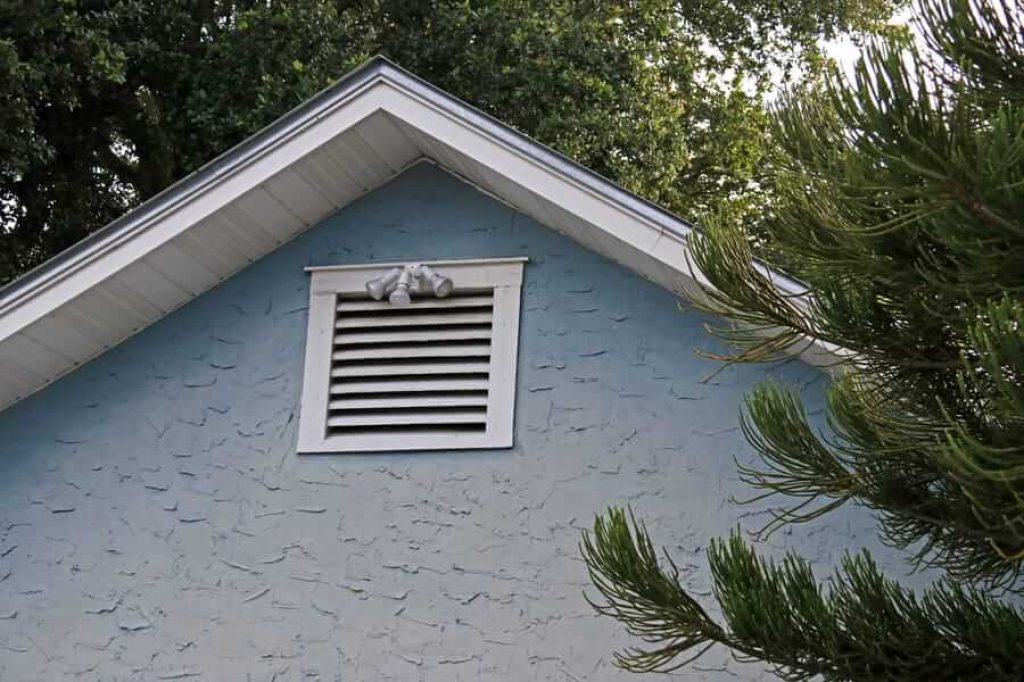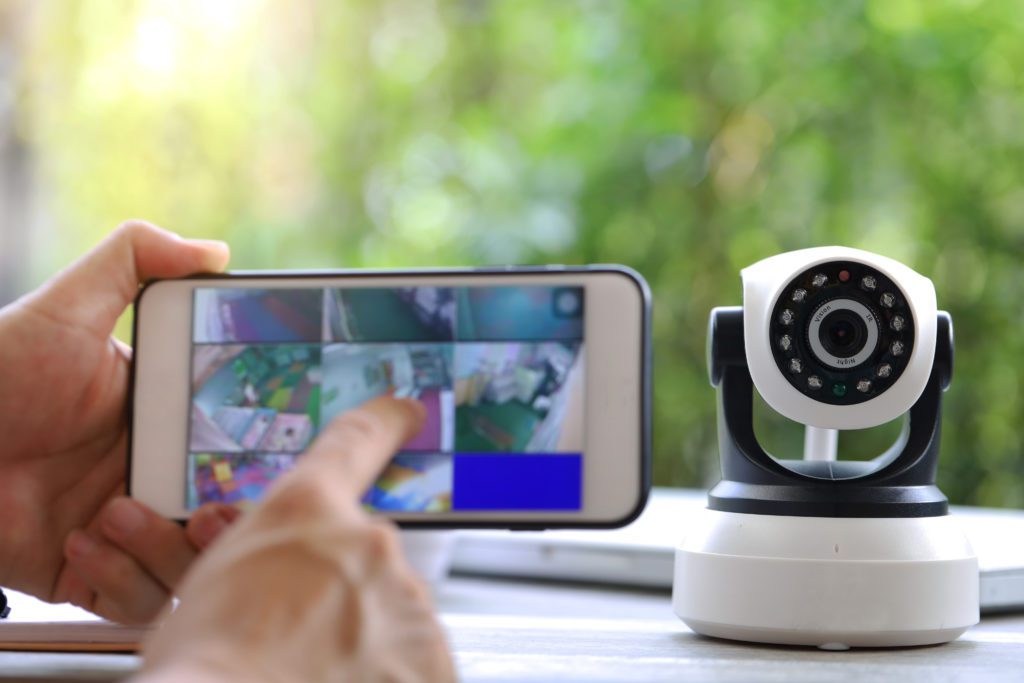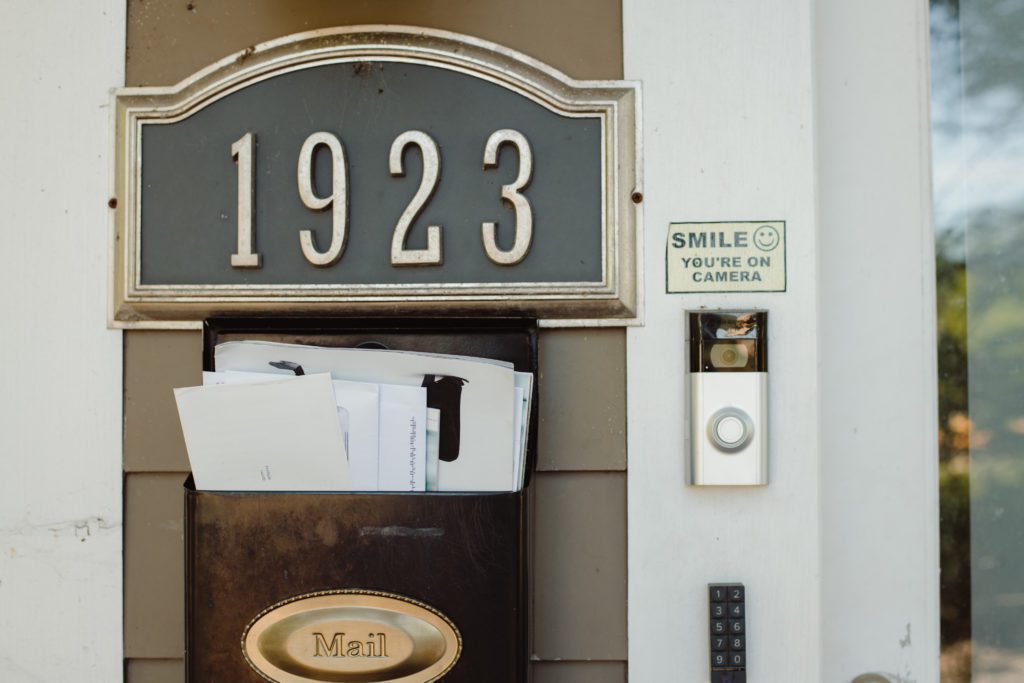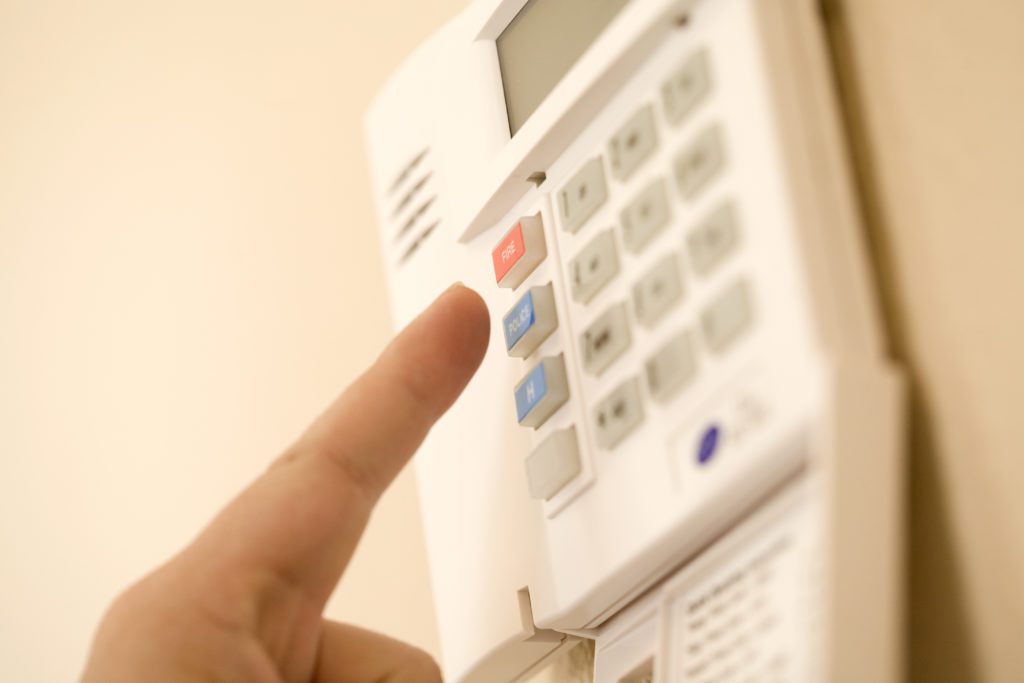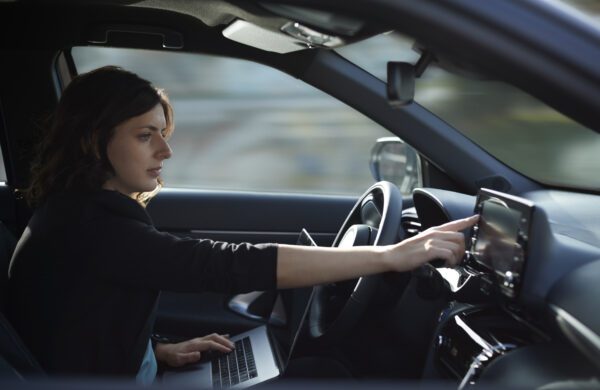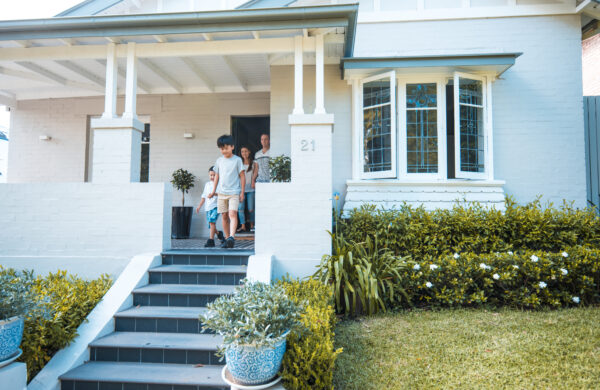If you’re one of the 70% of Americans who don’t have a home security system, you may wonder what your options are when choosing a system, how much an effective home security system would cost and whether you really need one.
In this article, we’ll share some facts about the actual frequency of home security threats, what you can do to make your home more secure, and how much it might cost to install and maintain an effective security system based on your unique needs.
A Break-in Every 30 Seconds
FBI statistics show that each year about 2.5 million people are victims of a burglary. That’s two break-ins every minute of the day. Police are only able to solve about 13% of these crimes, so there is not much you can do to retrieve your stolen property after a burglary has occurred. The best way to ensure the safety of your valuable property is by preventing a break-in with an effective security system.
Theft, burglary or home invasion?
It’s worth keeping in mind that over 70% of property crimes in the United States are non-entry thefts. Without entering your home or business, a thief can still make off with valuable personal property or business inventory. And the costs can still be serious, since the average larceny loss is over $1,000.
When a thief enters your home or business unlawfully, that’s a burglary. If they use force to break in, that’s considered a home invasion. Home security systems are primarily intended to prevent wrongful entry into a protected space, but they may also protect against threats other than theft or burglary, such as fire or flooding.
Not Just a Big City Problem
Many people assume that burglary and theft are mostly big city problems. In reality, FBI statistics show the opposite. New York has 165.5 burglaries per 100,000 residents. Arkansas has 523.1. New Jersey has 146.2 burglaries per 100,000 residents. Oklahoma has 613.3. Unfortunately, burglary and theft are all too common in both urban and rural areas, so a break-in could occur in a high-rise apartment, a suburban house, a commercial building or a farmer’s barn.
Not Just Under Cover of Darkness
Another common misconception is that most burglaries occur at night. In actuality, FBI statistics show the opposite: More burglars enter homes during the day, often while the property owner is at work. The most common time for a burglary is between 10AM and 3PM. However, a large percentage of burglaries still occur at night, and 27% of the time, there is someone in the home at the time of the break-in.
Not Just a Homeowner Problem
One-third of burglaries occur at a business location rather than a private dwelling. Among the two-thirds of home burglaries, a renter is the victim almost twice as often as a property owner. For both renters and owners, the average loss from a burglary is $2,416, which adds up to over $3.4 billion in lost property each year.
More Than the Value of Property is Lost
Whether the target of a burglary is a home or a small business, the loss is not limited to the value of the stolen property. If the victim files an insurance claim, they’ll see an average premium increase of 20%. Aside from the material loss, many victims struggle to regain a sense of comfort and security in their home.
Burglary Victims Often Add a Security System
Almost half of burglary victims subsequently install a home security system or take other protective measures, such as changing locks or adding an alarm system, to make their home or business more secure. While this is not surprising, it also suggests that a better time to make this investment would have been before the break-in.
Immediate Benefits of a Home Security System
When you add a security system to your home or business location, you immediately become three times less likely to become a burglary victim. In police interviews, burglars often mention that they are careful to avoid targets with visible signs of a security system, such as video cameras, window sensors and outdoor floodlights.
A second benefit is that your insurance company may give you a discount on your monthly premium (More on that later).
A third immediate benefit is a deeper sense of security that comes from knowing your home or business is better protected while you are away at work or while your family is sleeping.
Finally, if you operate a business out of your home, you can deduct a portion of the cost of the home security system and the monthly cost of any monitoring service from your income taxes.
What do you need to protect?
The best way to start planning a home security system is to take an inventory of the people, spaces and things you want to protect. An apartment with one outside door has different requirements than a large home with many ways to enter and landscaping to hide behind. A home with valuable works of art has different requirements than a barn with expensive farming equipment.
Whether you want to safeguard valuable property, protect your loved ones, or both, the right security system must anticipate the objects of protection and do its job before the protected space is breached.
Points of Access
Most basic home security systems begin at the front door with a deadbolt lock, a doorbell camera or an entry alarm. Because windows can also allow entry, they should be protected with locks and sensors that can detect a window opening or glass breaking.
There may be less obvious ways to enter an apartment or home, such as an attic vent or a cellar door. Commercial thieves have even been known to knock a hole through an exterior wall to gain entry to a warehouse or business. Thieves can be creative and determined, so a home or business owner must evaluate their property for all potential access points.
Protected Spaces
Of course, door and window locks can be defeated, so a comprehensive security system will often include cameras, motion sensors or noise detection sensors that monitor a particular space. This might include a family room with an expensive entertainment system, a foyer or basement entry, a garage where a boat is stored, or a nursery where a baby sleeps.
Apartments
Even a small apartment should have a dependable lock and contact sensors on all ground floor windows. Sensors can be connected to an alarm or, depending on the capabilities of your system, send a signal to your phone or a professional monitoring service. With the frequency of online ordering and the delivery service practice of leaving packages at the front door, a doorbell camera is also a good idea.
Single-Family Homes
While these same principles apply to a single-family home, there are many more security factors to consider with a freestanding house. A house can be approached from the front, rear or sides, and may have hedges or fences that can give a thief a hiding place while they take their time breaking in.
Houses often have outbuildings such as a detached garage or workshop that need to be protected, and with plenty of living and storage space, homeowners often have tools and toys that are both valuable and portable.
Houses have many points of access requiring protection, as well as more interior rooms. Home protection should always include exterior floodlights to expose a stealthy burglary attempt and a loud alarm to encourage a burglar to leave.
Business Spaces
Business spaces should be evaluated in terms of where valuable equipment or merchandise is located. Protecting a storefront or office is useless if valuable inventory is sitting on shelves in a back room or warehouse.
Visible exterior lights and cameras can discourage thieves, and interior cameras can help record evidence for the police, which could help in recovering your property.
Vandalism is another threat business owners face. While you may associate vandalism with rowdy kids, 83% of these bad actors are adults. In total, vandals destroy or deface property in more than 150,000 incidents each year.
Vulnerable Family Members
When most of us think of what we need to protect, our first thoughts are for our loved ones, rather than our collections of replaceable things. Even young adults who are confident they can protect themselves may have vulnerable family members who could benefit from home security measures.
Video monitoring can provide an extra level of security in nurseries and children’s rooms, and elder quarters should be equipped with a way to call for help in the event of a fall or health emergency.
RVs and Boats
With the rise of remote work, nomadic living arrangements have become very popular, including living and working in a recreational vehicle or a vessel. In both instances, the primary security threat is that your home is mobile. A thief can steal a boat or RV as easily as a car. Even if they fail to start the engine, they can use their own vehicle to simply tow your home away.
Along with home security basics, such as a good entry lock, video cameras, contact sensors, floodlights and an alarm system, your boat or recreational vehicle’s security system should include a way to disable the engine or prevent movement. Boaters can install a safety switch to disable the ignition. To prevent a motorhome or trailer from being towed, it can be secured with a hitch coupler lock or a tire boot.
Travel
Business travelers should consider how many people know that you are frequently away from your home. While your family, colleagues and friends are all honest, it only takes a few degrees of separation before someone hears you are a frequent traveler and tries to come calling while you are away.
Fire
While home security systems are primarily used to deter entry, many systems can be supplemented with fire protection. Fire protection is a natural complement for home monitoring, and the threat is very real. In the past year, fire departments reported 346,000 home fires, resulting in 2,620 deaths, 11,070 injuries and $7.3 billion in property damage.
Flood
Every day, water emergencies affect more than 14,000 homes. Over the course of a year, small and large flood incidents add up to $20 billion in property damage.
Water damage caused by a small plumbing leak, a faulty appliance or a basement leak may cost only a few hundred dollars to repair. However, a minor flood covering a small home’s floor with one inch of water costs an average of $10,000 to repair. Flooding up to one foot of water may cost $30,000 to repair, and after a heavy inundation from a main break or storm flooding, repairs can average $50,000 to $100,000.
Insurance figures show that damage from the average flood emergency costs a homeowner $11,098 to repair. In many cases, that damage could have been mitigated or avoided altogether if the home was equipped with a security system designed to detect flooding and respond with an appropriate alarm or call to a security monitoring service.
Self-Monitoring
Many home security systems permit self-monitoring using your smart phone. If a window sensor is activated or a motion sensor detects movement, the system sends a notification allowing you to respond in several ways.
If you have live streaming from a doorbell or interior camera you can see the threat and, with some systems, you can speak to the person who activated the camera. If you are traveling and unable to respond, you can call a family member or a neighbor to have a look, or you can call the police and ask them to respond.
The main advantage of self-monitoring is that, with most systems, it’s free. The disadvantage is that you bear all the responsibility for answering the alert and choosing a course of action. It’s possible this responsibility could come in the middle of the night when you are not necessarily prepared to think clearly and act quickly.
Professional Monitoring
In the past, professional monitoring was a standard feature of most home security systems. However, as technology has advanced, self-monitoring has become more popular and professional monitoring has become an add-on option.
There are several advantages to professional monitoring: you get 24/7 attention to your sensors and cameras and a trained partner who can respond with you – or in your place if you are traveling or otherwise occupied.
A professional monitor doesn’t have to think about the right way to respond. When they receive an alert, they will call you immediately, and if they can’t reach you, they won’t hesitate to call the appropriate emergency responders.
Guaranteed Emergency Response
A final benefit of professional monitoring is the guarantee that they will treat the alert as an emergency. There are many situations where a signal from your home security system could come at exactly the wrong moment: during an important meeting, in the middle of your child’s recital or while you’re sitting in the dentist’s chair.
In these situations, it’s natural to wonder whether it is really an emergency or if it’s just the neighbor’s dog again. With professional monitoring, you don’t have to wonder. If a monitoring agent calls and you can’t answer, they’ll take it from there.
Home Security Equipment
New technology in security cameras, sensors, audio, wireless networks, remote control, the internet of things (IOT) and smart phone applications has brought about a revolution in home security equipment, leading to new features and lower equipment costs.
Security Cameras
Video monitoring adds new capabilities and flexibility for remote monitoring. Rather than calling the police any time a motion sensor is activated, a homeowner or their monitoring service can simply check the camera and see who set off the sensor.
Video streaming
Video streaming allows you to supervise your baby-sitter with a nanny cam, determine whether the cleaning crew is finished inside the house or make sure your pets are safe while you’re away.
Video recording
Video recording allows you to save, rewind and review camera captures. Video can be recorded on cloud storage or a local storage device such as an SD card. Some providers will provide free cloud storage with purchase of their security cameras, while others charge a modest monthly fee.
Video recording is never more valuable than when evidence is needed. Beyond providing police with incontrovertible evidence of misbehavior, video can also prove someone’s innocence or wrongdoing.
Two-Way Audio
In addition to live video, many new cameras are equipped with both speakers and microphones, so the homeowner or person monitoring the camera can speak to and hear replies from the individual whose image is on camera.
The uses of this capability are endless, allowing you to question a visitor on the front porch, give a heads up to a family member inside the house or challenge a stranger who shows up where they are not supposed to be.
Indoor and Outdoor Cameras
Full-featured indoor cameras cost less than $100, while more weather-resistant outdoor cameras cost up to $200. Unlike the days when security cameras were tethered to a coaxial cable to supply power and return images, many modern cameras have long-lasting batteries and can transmit images over a wireless network, allowing them to be placed anywhere the wi-fi signal can reach.
Doorbell Cameras
The surge in home delivery brought about by Amazon, Door Dash and Instacart was tailor-made for the doorbell camera. With an alert from your doorbell, you can tell a UPS driver where to place a package, skip answering the door for a political canvasser, or jump up to welcome a guest.
With two-way audio, you can access your front porch from anywhere. You can ask the Girl Scout with cookies to come back later or tell a solicitor you’re not interested. You can warn a porch pirate to drop your package and leave…or if necessary, you can record a theft in progress and provide video evidence to the police.
Doorbell cameras range in price from $50 to $200. They are easy to install and can work with your smart phone to self-monitor or be integrated with a monitoring service.
Smart Locks
Like the best of technology, smart locks are providing increased security, convenience and affordability. No need for a key under the flowerpot – working with your smart phone, smart locks can let you use a virtual key or loan one to a guest.
You can monitor the activity at your front door and, when necessary, change codes to keep your smart lock secure. If you are a landlord, a smart lock gives you the capability to unlock a door for a tenant via remote control or to set a new code with a few keystrokes.
If you are an AirBnb host, there’s no need to run to your property to open a door for a guest who lost their key. Have you ever had to change a lock because a guest left and took your key? Now you can simply revoke that electronic key and create another.
You can get a basic keypad code lock for under $50, while networked and video capable smart locks range from $180 to $300.
App Control
As the Internet of Things gives us more ways to control our living space, appliances and devices, home security systems are a natural complement to this capability. Although not all home security systems include app control, many smart security systems work with IOT systems to let the homeowner unlock their front door, control video cameras, arm or disarm alarms and more.
Sensors
One of the most important components of home security systems are sensors, which are designed to watch, feel, listen and even smell the air for threats to the home. Sensors may be wired to a central monitoring station and alarm or may operate wirelessly over a wi-fi network. Many DIY systems allow the homeowner to mount sensors with an adhesive strip.
Motion
The three primary types of motion detectors include ultrasonic, heat and light sensors.
- Active ultrasonic sensors bounce waves of energy against their targets, returning a signal to a transducer in the sensor. Ultrasonic sensors can be adjusted to differentiate between a pet’s harmless movement and a potential human intruder.
- Passive infrared sensors detect changes in the heat signature of the protected space, alerting the security system when a warm-blooded target enters or leaves the space.
- Light sensors use one element which generates infrared or laser light and a second element which serves as a target. When someone steps between the two elements, the beam is broken and the sensor signals the monitoring system.
Since you probably don’t want a phone alert every time your dog walks through the room, you can have your installer adjust the motion detectors for the desired sensitivity or, with a DIY installation, you can use the sensors’ app to adjust the settings yourself. Motion sensors are available for as little as $20 each.
Contact Sensors
Contact sensors are simple, reliable magnetic switches, which are in one state when the two parts of the sensor are close to each other, such as when the window or door is closed, and then switch to another state when the two parts of sensor are far apart, such as when the window or door is open. It is not easy to fool a sensor that simple, and there is very little that could go wrong.
Contact sensors are ideal for points of access anywhere in a residence or business. Individual sensors are only a few dollars each, making it easy to install a complete contact sensor door alarm for $20 to $50.
Glass Break Sensors
Smash and grab is a common form of invasion burglary, in which the thief breaks a window to gain access to a home or business. Breaking a window would not necessarily activate a contact sensor – the window frame may remain closed and the area might not be protected by a motion sensor. Glass break sensors use the sound frequency of breaking glass to signal the security system and generate an alarm. Glass break sensors can be placed in strategic locations for only $5 to $10 each.
Environmental Sensors
A home security system can also include environmental sensors, which are capable of alerting a homeowner to the presence of fire, flood or dangerous gases.
- Flood sensors can be placed in any location where water could accumulate and cause damage, such as in the basement, under the dishwasher or in the laundry room. Water heaters need a flood sensor, as do any rooms with expensive floor coverings. Flood sensors can operate independently or be integrated into a security system, and are available for $20 to $50.
- Smoke sensors use ionization or photoelectric cells to detect particles in the air that are released by fire and can be triggered before smoke becomes thick enough to see. Smoke alarms can alarm independently or trigger a central system monitor. The average cost of such an alarm is $20 to $50.
- Carbon monoxide sensors measure the surrounding air for dangerous concentrations of CO, which can be deadly. More than 50,000 Americans were hospitalized last year due to carbon monoxide exposure, and 480 of the incidents were fatal. CO sensors are sometimes integrated with a smoke alarm. Average pricing is $20 to $50.
- Propane and Natural Gas sensors detect the presence of combustible gases in potentially explosive concentrations. Gas sensors may use catalytic, infrared or ionization techniques to monitor gas levels. If concentration rises above a safe level, an alarm is actuated. The average cost of a propane sensor is $30.
Panic Buttons
Even in the age of the smart security system, one of the most popular home security accessories is the humble panic button. If a homeowner wakes up to the sound of a break-in, sees an intruder through the window or hears a burglar in the house, a panic button can immediately set off alarms, turn on floodlights and alert a monitoring service. Panic buttons are good choices for master bedrooms or living quarters for family members who are elderly or have health or mobility issues. Panic buttons cost $15 to $30.
Sirens
Sirens are an essential element of most home security systems. Burglars don’t like noise. The piercing noise of a siren only has one meaning. It will rouse the neighbors to look out their windows, check on their friends and perhaps call the police. In any case, a thief is likely to depart the area as quickly as possible.
Depending on system installation requirements, sirens may be wired or wireless, with or without flashing lights, and rated for indoor or outdoor application. Sirens may use a single or dual tone and may be mounted on a wall surface or concealed by a tamper-proof shield. In some systems, the siren is part of the control panel or base station. Sirens can range from $10 to over $100 depending on features.
Smart Lights
Light plays an important practical and psychological role in home security systems. When light is used to continuously illuminate an area, the area becomes a less attractive target for theft. To a burglar, light means their activity can be detected and they can be identified by intended victims.
Floodlights combined with a motion detector or sensor system can have a powerful deterrent effect. When a burglar approaches a home and is suddenly illuminated by bright floodlights, the message is clear: “We see you. If you stay here, you will be caught.” Outdoor smart lights with motion sensor activation are $35 to $75.
Base Station
As the name suggests, a base station is the nerve center of a home security system. In a wired system, this is where the wires go. In a wireless system, this is how the signals communicate via Wi-Fi. A base station may include a keypad or touch screen for arming/disarming the system and entering commands. The base station may also include a built-in siren, as well as backup batteries or cellular capability to allow operation during a power outage.
Some base stations include key fobs to arm and disarm the system with the touch of a button. Fobs with RFID tags allow the user to simply tap the base station to arm and disarm. Most wireless base stations have a limited range, so systems in larger homes may need an extender or signal repeater to connect more sensors. Base station costs vary by manufacturer. In the next section, we’ll look at the complete cost of installing and maintaining several of the most popular home security systems.
Security System Equipment & Service Providers
The range of home security equipment and service providers includes solid performers with decades of experience, as well as exciting newcomers who are redefining this industry with more flexible and affordable choices for quality home security systems.
The following summaries are arranged in order of cost for a starter kit. All of these home security systems can be installed professionally or can be installed yourself in less than one hour. Security systems can be self-monitored, or most home security companies will add the service for a monthly fee.
Less Than $100
Wyze — The Wyze Home Security System Sense v2 Core Kit includes wi-fi hub, keypad, entry and motion sensors, and Wyze Cam v3 indoor/outdoor camera. Monitoring service is not required, although purchase includes a 6-month trial subscription.
$100 to $199
Fortress — The Fortress S6 Titan includes a 3G/4G main panel, one motion detector, one door/window contact sensor, two remote key fobs, two RFID key tags and a micro-USD power supply. Monitoring service is not required.
$200 to $299
Abode — The Abode iota system is strong on integration with third-party home automation devices and systems. It comes with a 1080p camera, a built-in siren, one motion sensor and wireless two-way audio. Monitoring service is not required.
Cove — The Cove home security system features one of the best system control panels, with a large 7-inch touch screen, three door/window sensors and one motion detector. More sensors, powered with CR2032 batteries, can be added for $15 each. Requires Cove monitoring service.
Ring — The Ring Alarm Security Kit comes with a base station with AC adapter, keypad with USB power cable, one door/window sensor, one motion sensor, a range extender and a DIY installation kit. Additional sensors are $14.99. Monitoring service is not required.
blueADT — blueADT is the DIY option from ADT. It is easy to install, supports Alexa and Google voice commands and will work with third party devices. The starter kit includes the hub, two door/window sensors, four window decals and a yard sign. Requires ADT monitoring service.
SimpliSafe — SimpliSafe offers a great combination of features and value. The starter Foundation pack includes a base station, a wireless keypad, one motion sensor, one entry sensor, a yard sign and window decals. More sensors can be purchased for $14.99. Monitoring service is not required.
$300 to $499
Brinks — Brinks Home Security backs up their easy DIY installation with free phone support and an easy to use alarm.com app. Arming the system, checking system status and controlling iOT smart devices is easy with Alexa and Google Assistant integration. Brinks monitoring is required.
Alder — Alder Security is easy to install and works effortlessly with Alexa to arm, check status and control smart devices. After setting up the control panel and mounting the self-stick sensors, installation just requires downloading the Alder Security app. Alder monitoring is required.
Vivint — Vivint is top-rated for easy home automation. Their Starter Kit comes with the Vivint Smart Hub, two door/window sensors, one motion detector and one water sensor. You also get a $100 credit to spend on their other sensors, cameras or thermostats. Vivint monitoring service is required.
$500 to $699
ADT — ADT offers a wide range of options for home automation. A professionally installed ADT Command system can run several thousand dollars. But you can get a starter kit with the Command panel, three door/window sensors and a motion detector for $599. ADT monitoring service is required.
FrontPoint — FrontPoint home security systems work with Alexa and Google Assistant. The package comes with a hub and keypad, six door/window sensors, two motion sensors, one indoor camera, a doorbell camera, a smoke and heat sensor, window stickers and a yard sign. FrontPoint monitoring service is required.
About that Home Insurance Discount
Manufacturers of home security systems talk about discounts of 15% to 20%. However, there seems to be wide variation in actual discounts offered. The insurance quote service QuoteWizard found that the largest discount offered was $156 (14.7%). The average premium savings among all quotes was $59 and the smallest discount offered was just $8.
Is a home security system worth the cost?
Considering that the average loss to a burglary is $2,416, and knowing that a claim for burglary could increase your insurance premium by 20%, a few hundred dollars to set up a home security system is a rock-solid investment.
Your return on that investment is the elimination of those risks, and the security of knowing that your home and family are better protected by your home security system.
